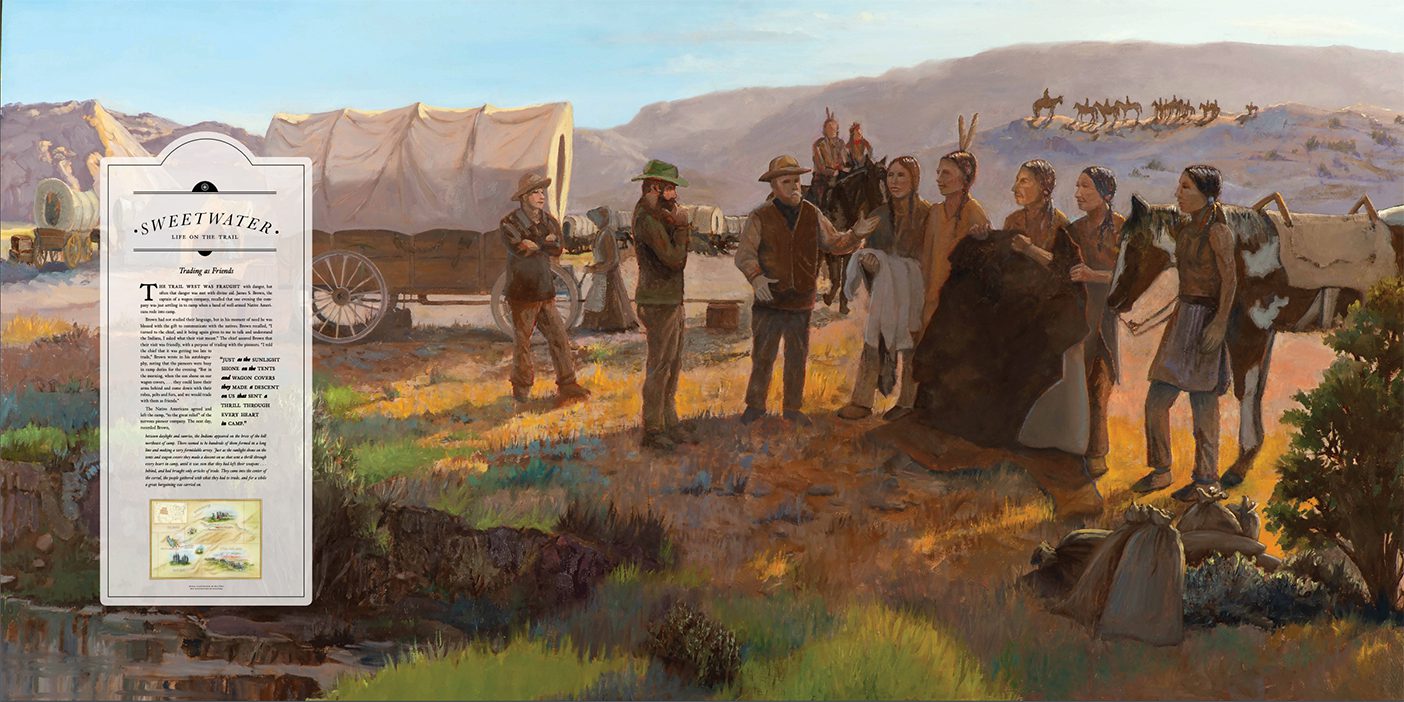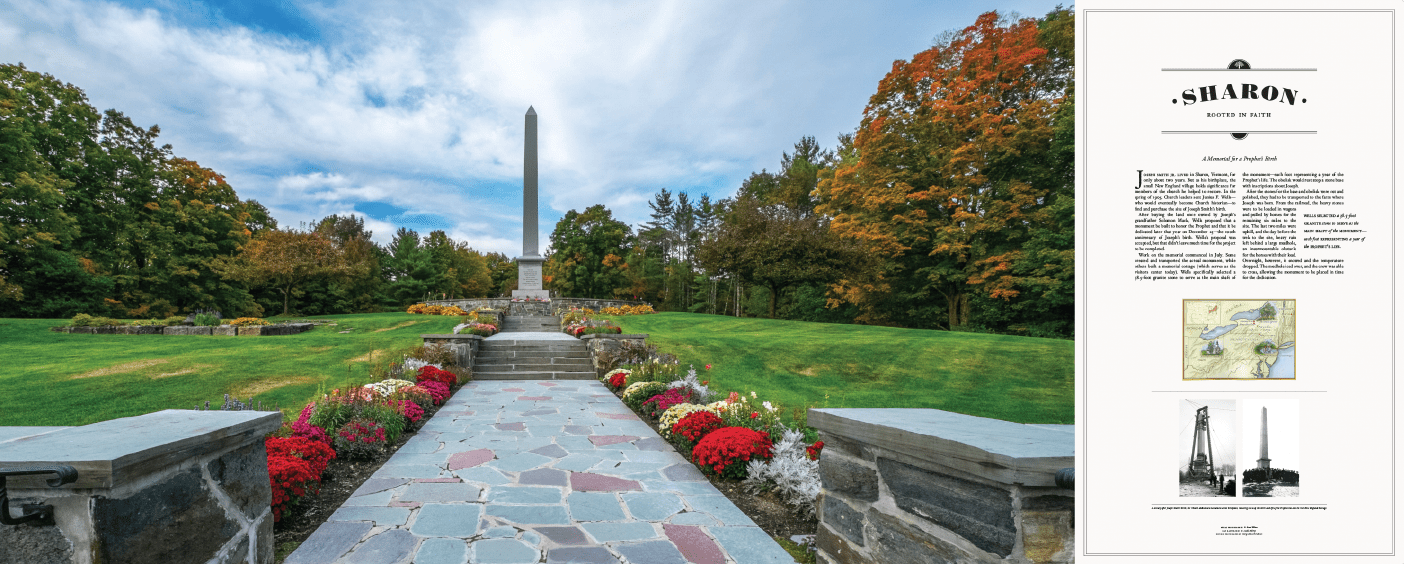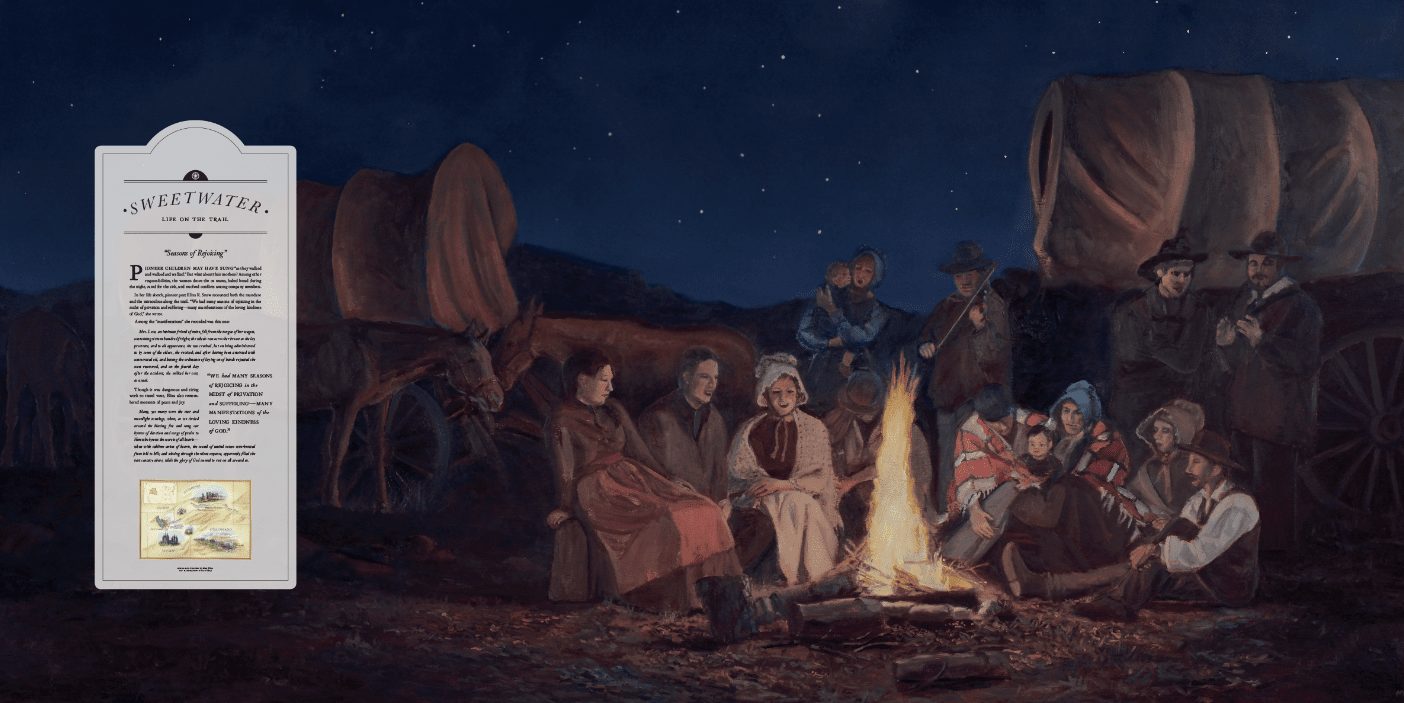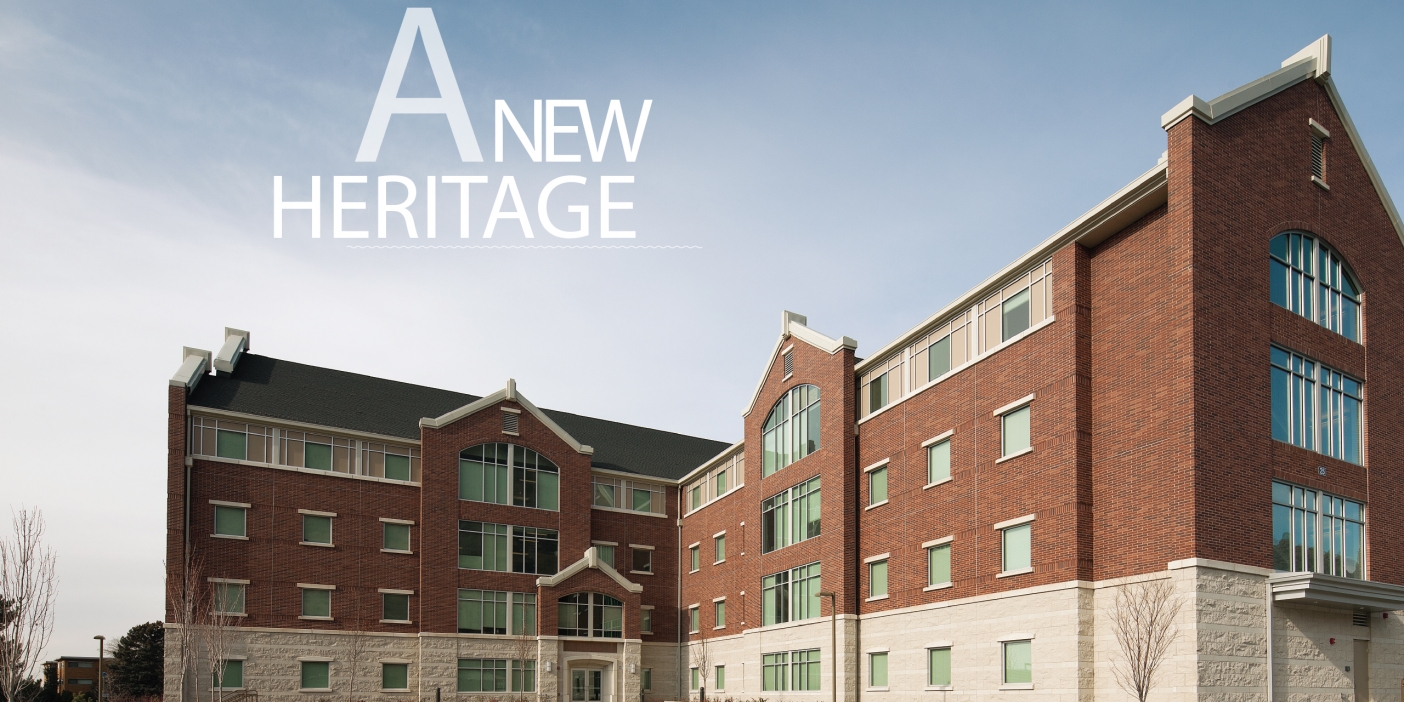
After nine years the 15-building complex of Heritage Halls student housing is complete. With spacious living quarters close to campus, the buildings also feature a series of murals that depict Church history sites—from Sharon, Vermont, to the state of Deseret.
One story shown is of peaceful trading between the James S. Brown pioneer company and Lakota Native Americans near the Sweetwater River in Wyoming. While the event is recorded in Brown’s autobiography, muralist Marie Withers (MA ’19) also worked with Navajo photographer Eugene D. Tapahe (BFA ’92) to get feedback from the Lakota people.
“There are over 500 federally recognized tribes,” says Tapahe. “All of them have different cultures and traditions. A lot of times the depictions of our cultures are not complete and accurate.” The discussions with the Lakota brought several changes to the mural concepts to accurately represent the trading.
Remove Leader’s Full Headdress
Since the trade took place on the prairie, it wouldn’t be the chiefs who left camp to do trading.
“We don’t like to be called Indians. Even now, it’s hard for me to say, ‘Indians,’” says Tapahe. He suggests Native Americans instead.
Represent Goodwill
“Native Americans weren’t always on the warpath. In fact they were seldom on the warpath,” explains Tapahe.
Change Trade Items to Buffalo and Coyote Skins
The initial mural included pottery and other goods that the Lakota wouldn’t have traded.












